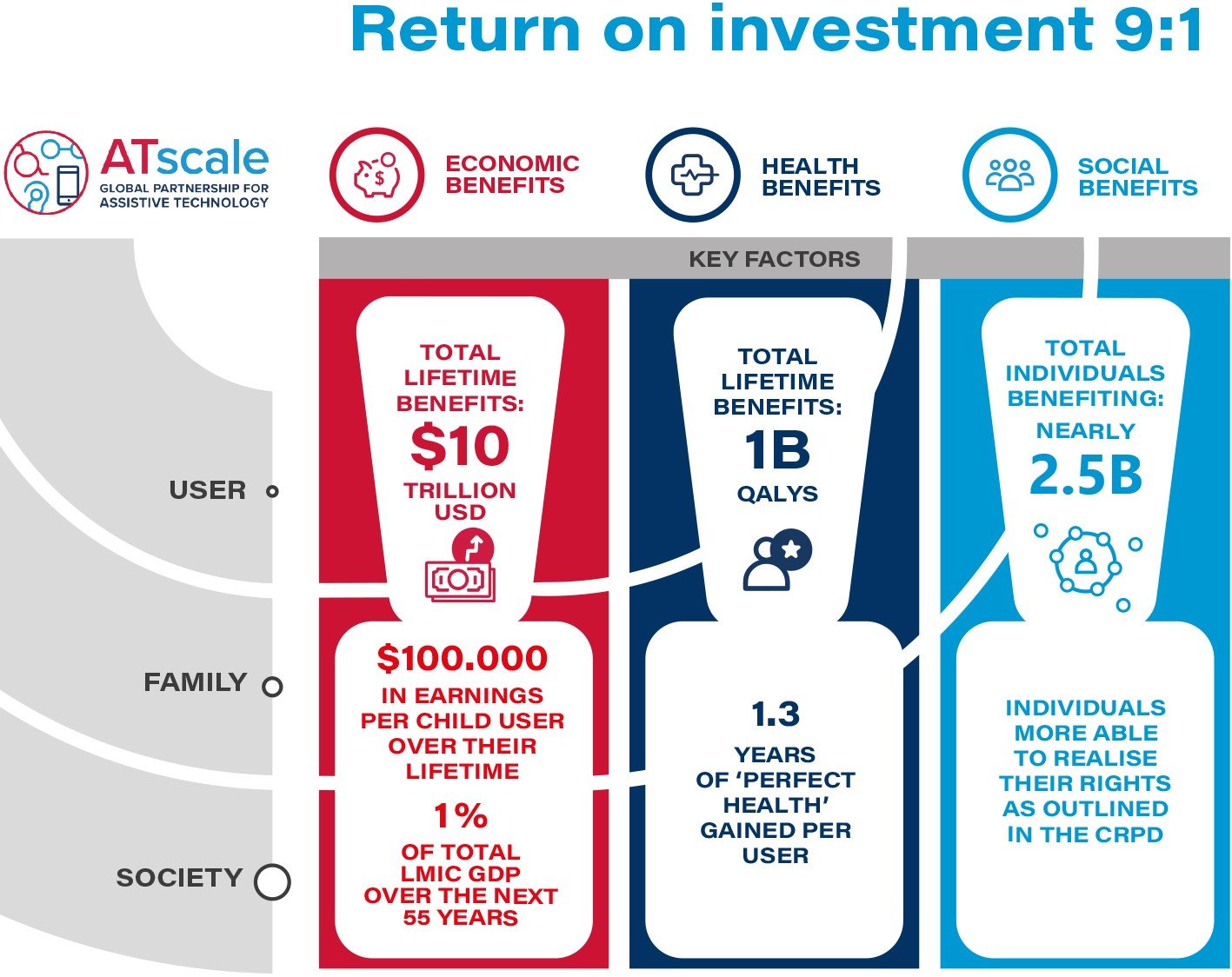About Assistive Technology
What is AT?
Assistive technology (AT) is an umbrella term for assistive products such as wheelchairs, hearing aids, prostheses, eyeglasses or digital devices, and their related systems and services. AT can facilitate people’s ability to move, communicate, and see better than before.
What is the problem?
Globally, over 2.5 billion people need to use AT. Today in low-income countries only 10% of people have the AT they need, in stark contrast to the 90% of people in need in high-income countries who do. This gross inequity is unacceptable.
The number of people who need AT across the world is growing fast due to ageing populations and non-communicable diseases. By 2050, an estimated 3.5 billion people will need AT.
Watch the GReAT report short film
The first ever Global Report on AT (GReAT) was launched in May 2022. The landmark report by WHO and UNICEF, sponsored by ATscale and AT2023, presents shocking data on the global need for AT and lack of access to it.
The report outlines how a comprehensive understanding of AT access is needed to strengthen national systems and advance the global assistive technology sector; and how global, transnational, and national strategies are needed to unify and raise the priority level of the assistive technology sector itself.
What are the benefits to individuals and societies?
AT transforms lives
Credit: David Constantine, Motivation
A wheelchair, an artificial limb, a pair of eyeglasses or a hearing aid can make the difference between failure or success at school, between a job or unemployment, between a life of opportunity or a life of dependency. Timely access to appropriate, affordable, quality AT can transform people’s lives. AT allows children to play and learn, adults to work and travel, and older people to join in with family and community life.
With AT, over 2.5 billion people have the potential to live more fulfilling, healthy and independent lives, and participate in education, the workforce, the economy, and contribute to a country’s social development and economic growth.
Investing in AT makes sound economic sense
Investing in AT both has a transformative impact on people’s wellbeing and makes sound economic sense for funders and governments. It is both the right thing and the smart thing to do.
Economically, the figures are dramatic. Investment in four products - hearing aids, prostheses, eyeglasses and wheelchairs - will result in a return of investment of 9:1. For a child in a low- or middle-income country, access to AT can later make a difference of US$100,000 in lifetime income.
Access to AT ultimately affects a country’s economic development, and the wealth of communities and societies.
Access to AT supports inclusion, equity and development goals
Credit: Flickr.com
AT is critical for advancing inclusion, equity, human rights, universal health coverage and the Sustainable Development Goals. The Convention on the Rights of Persons with Disabilities urges governments to provide affordable AT and related services.
Inclusion is key to realize the promise of the SDGs and leave no one behind. There will not be full inclusion while people are unable to access AT.
What are the challenges in providing AT?
Systems
The systems to support access to AT for all are currently underdeveloped. Many cross-cutting factors influence this including: :
inconsistent political will;
lack of understanding;
lack of commercial focus;
significant gaps in resources and investment.
Markets
Market barriers limit both supply and demand of AT.
Market barriers limit both the demand and supply of AT. There may be inadequate demand for AT from users, service providers, and country governments. Reasons for this may include a lack of awareness, stigma and discrimination, insufficient and inadequately trained providers, lack of inclusion in insurance schemes and fragmented procurement systems.
On the supply side, AT products may not be sufficiently available, affordable, appropriately designed, and of assured quality. All these present challenges and barriers in AT markets.
Banner photo: Deafkidz International





